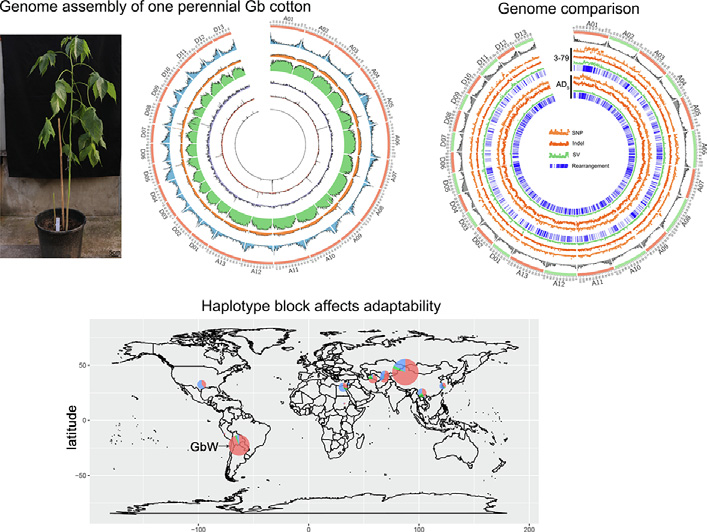Abstract
Introduction: Sea-island cotton (Gossypium barbadense, Gb) is one of the major sources of high-grade nat ural fiber. Besides the common annual Gb cotton, perennial Gb cotton is also cultivated, but studies on
perennial Gb cotton are rare.
Objectives: We aimed to make a systematic analysis of perennial sea-island cotton and lay a foundation
for its utilization in breeding, and try to identify the representative structural variations (SVs) in sea island cotton, and to reveal the population differentiation and adaptive improvement of sea-island cot ton.
Methods: Through genome assembly of one perennial Gb cotton accession (named Gb_M210936) and
comparative genome analysis, variations during Gb cotton domestication were identified by comparing
Gb_M210936 with annual Gb accession 3–79 and with wild allotetraploid cotton G. darwinii. Six peren nial Gb accessions combining with the resequenced 1,129 cotton accessions were used to conduct pop ulation and genetic analysis. Large haplotype blocks (haploblocks), generated from interspecific
introgressions and intraspecific inversions, were identified and were used to analyze their effects on pop ulation differentiation and agronomic traits of sea-island cotton.
Results: One reference genome of perennial sea-island cotton was assembled. Representative SVs in sea island cotton were identified, and 31 SVs were found to be associated with agronomic traits. Perennial Gbcotton had a closer kinship with the wild-to-landrace continuum Gb cotton from south America where
Gb cotton is originally domesticated. Haploblocks were associated with agronomic traits improvement
of sea-island cotton, promoted sea-island cotton differentiation into three subgroups, were suffered from
breeding selection, and may drive Gb cotton to be adapted to central Asian.
Conclusion: Our study made up the lack of perennial Gb cotton genome, and clarified that exotic intro gressions improved the traits of sea-island cotton, promoted the population differentiation, and drove
sea-island cotton adaptive to central Asia, which will provide new insights for the genetic breeding
improvement of sea-island cottons.

full text